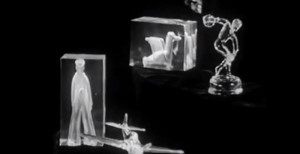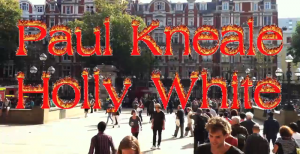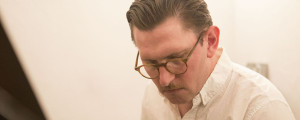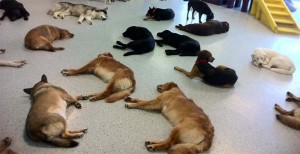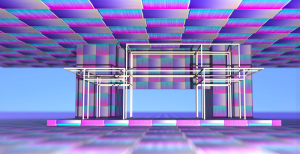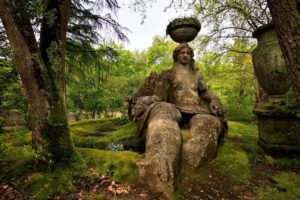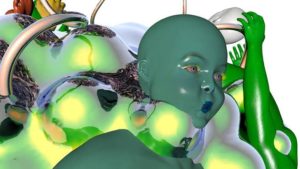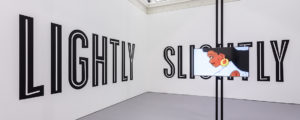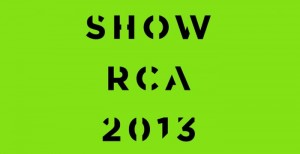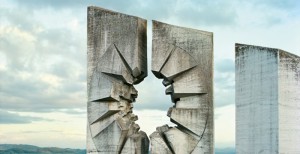Navid Nuur‘s first UK solo exhibition at Parasol Unit London is inimitably concerned with phenomenology and art. That is, the way in which sculpture, painting and other media are experienced by the viewer. Naturally then, it is of interest to observe how exactly visitors to Phantom Fuel react to works on display.
One couple blast a path through the first darkened room. In little time they scan its contents: a chrome commercial skip on its side, a crimson neon crescent hung to the wall… even perhaps the piece’s rouge reflection, captured in a metallic sheet displayed on an opposite wall. These two gain an impression at most, an aura of the narrative Nuurr wishes to paint. Yet, as the march on toward room two, a characteristic intervention refuses such a basic engagement with the work. ‘Welcome/ Welcome’ is obvious, even to the oblivious, an installation made up of strips of sandpaper, hung from the top to the bottom of a doorway on both facing sides. It is beyond subconscious, beautifully simple, and a deliberate scratch on those who may have switched off their primal senses.
It is the on-off switch, the key to the puzzle and the beginning of an experimental engagement with materials in a contemporary art space, with which Nuurr wishes to toy. Small curatorial texts charmingly involve the viewer with artworks. Sometimes quite simply, as with ‘redblueredblue’ (2008-2013) a Nokia phone wrapped in modelling clay is activated as a sound work when rung.

More engagingly, a series called ‘These are the days, 2004-2013’ tapes together recycled debris, from previous Nuur exhibitions, over four torches to create what appear to be small scale sci-fi sculptures. Again, visitors are encouraged to interact with the work, and those curious enough will find small peep holes into the objects where tiny exhibition spaces, sculptural installations and figures walk through caves.
These are small-scale people, wandering around artificial spaces that remind us of our own existence in a place. The ground floor exhibition rooms have a view hole from one room to the other that exaggerates this notion of context further, given that from one side the work ‘From the eyecodex of the monochrome studies (study 92-95) 1998-2013’ seems to be in the background. On the other it is spherically framed reflecting specks of orange in the glow of light. Even the gallery itself is signified by a light box sign and work ‘Untitled, 2007-2010’ that flashes from the word “There” to “Here”.

Across the exhibition, Nuurr pushes these ideas further still. Mirrors without reflection playfully explore linguistics, piles of newspapers appear without a single printed word, ice-creams melt on projectors and a daring video presents a “timeline that captures the history and illumination of painting”, through hand gestures and the folding of a sheet of paper. Those who are curious will be rewarded.
Navid Nuur’s Phantom Fuel is running at at Parasol Unit Foundation until May 19, 2013.

